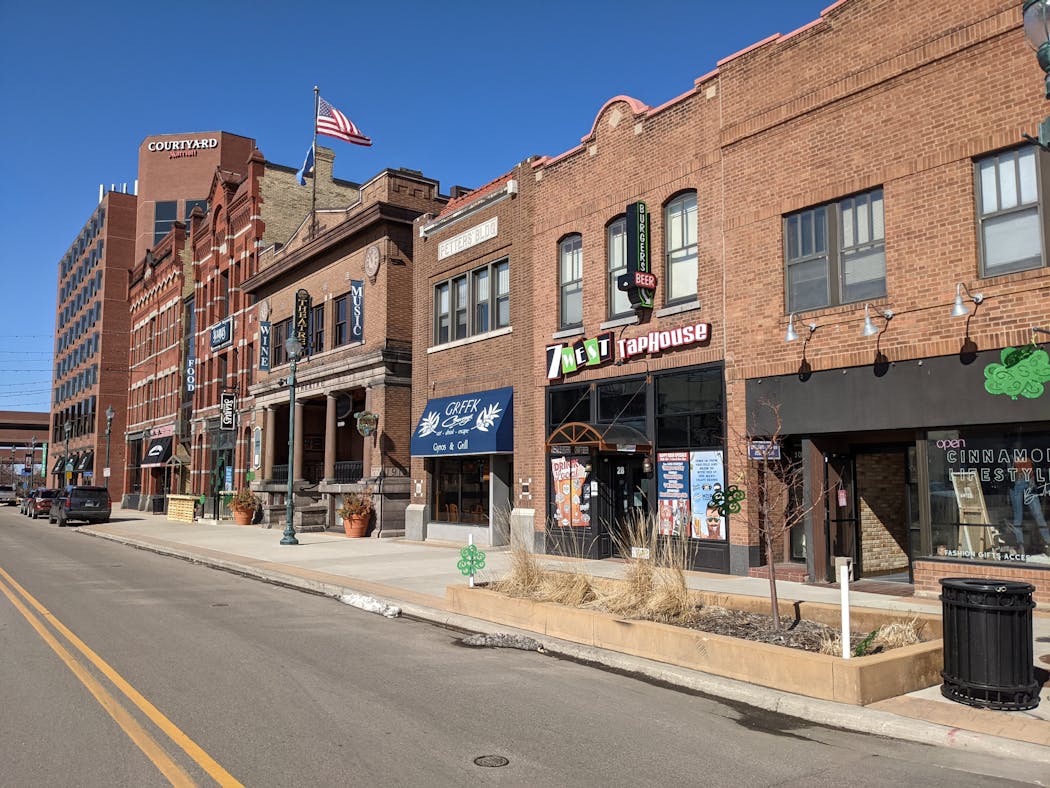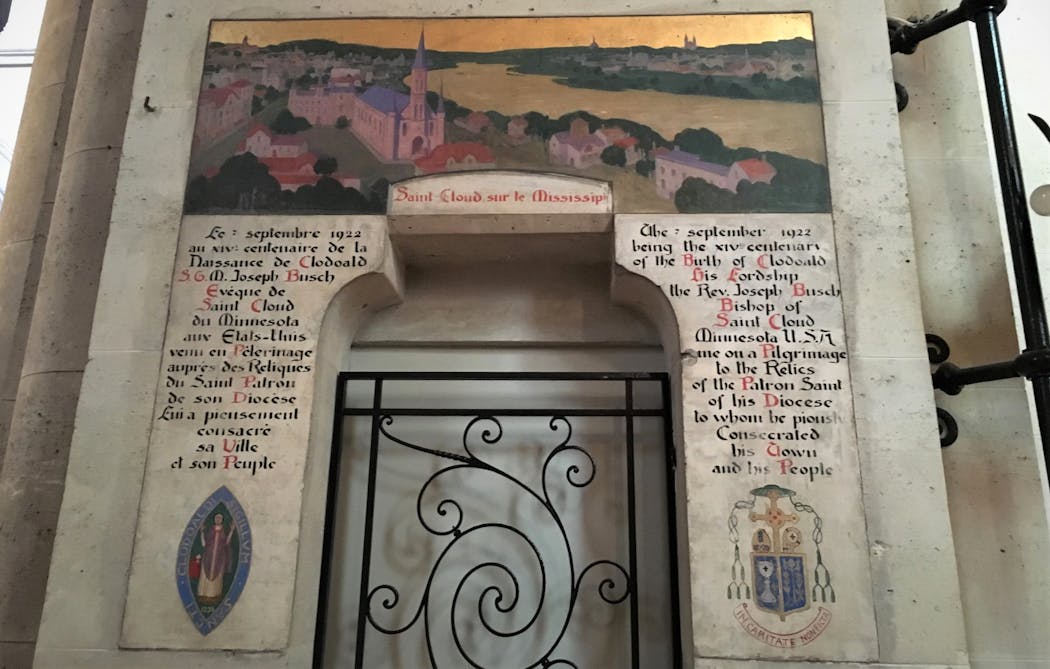How did St. Cloud get its name? It's a strange story
Listen and subscribe to our podcast: Via Apple Podcasts | Spotify | Stitcher
ST. CLOUD — What do a medieval French prince and an 1800s Minnesota sawmill owner have in common? They both played a role in how central Minnesota's hub got its name.
Andover resident Sharon Carlson wanted to know the back story behind the name St. Cloud. She sought answers from Curious Minnesota, the Star Tribune's community reporting project fueled by great reader questions.
Does it have ties to American Indians from the area, she wondered? Or maybe it has to do with clouds over the Mississippi River?
If only it were that simple.
The name actually traces its roots back to an inside joke between several men in the 1850s, according to research by the late Bob Lommel, a former historian at Stearns History Museum. Lommel published an account of how St. Cloud got its moniker in 1984.
John L. Wilson, a sawmill owner thought to have French ancestry, owned land in one of the three white settlements that later joined to form St. Cloud. Now known as the "father of St. Cloud," Wilson hired two Frenchmen to paint a fence in 1853.
Wilson had spent his down time reading about Napoleon Bonaparte's — still somewhat recent — invasion of Russia, according to an account from St. Cloud's first bishop, Otto Zardetti, who died in 1902.
"Wilson had arrived at the point in the narrative where an official messenger from Paris had reached Napoleon before Moscow, conveying to the emperor official state news," Zardetti said, according to Lommel's research. "After having listened to him, Napoleon was anxious to hear something of his wife, the Empress Marie-Louise, who resided at the Imperial Castle at Saint-Cloud, France, as did all the queens of the Bourbon dynasty. Napoleon turned to the messenger, asked 'How are things in Saint-Cloud?'"
Just as Wilson read this passage, the two hired Frenchmen appeared and he joked, "Boys, how are things in Saint-Cloud?"
That question became an inside joke between the men. When Wilson platted the land with Benton County — as Stearns County did not yet exist — he picked the name St. Cloud.
So St. Cloud, Minn., is named after Saint-Cloud, France, a city in the western suburbs of Paris. The French pronounce it "san-cloo."
A rebellious prince
But how did Saint-Cloud, France get its name? The answer involves a prince who relinquished his royal status to become a monk and live as a hermit.
The man who became known as St. Cloud — originally Clodoald — was the grandson of the first Christian king of France, according to Lommel's history.
When Clodoald was a boy, he escaped an assassination attempt by his uncles and hid until he was 20. He then appeared at a religious ceremony and cut off his long hair in front of the bishop, Lommel wrote. Long hair was a symbol of royalty at the time.
About a decade later, Clodoald returned to Paris at the request of the people and was ordained as a priest. After he died, many miracles were attributed to him. The village where Clodoald had built a church for the poor changed its name to Saint-Cloud and became a pilgrimage site.
St. Cloud Mayor Dave Kleis, an avid traveler and history buff, visited France in 2015.
"There's been a relationship — there's actually a painting, a mural, in that church in Saint-Cloud that depicts St. Cloud," Kleis said.
The mural was painted in honor of a bishop in the St. Cloud diocese, Joseph Busch, who traveled to Saint-Cloud in 1922 to celebrate the 14th centenary of the saint's birth. Lommel, the historian, wrote that Busch "returned with the vertebra of the saint and a duplicate of the famous statue of St. Cloud.""
The statue and bone fragment now reside in St. Mary's Cathedral in downtown St. Cloud.
The relationship between the cities further strengthened in 1956 when St. Cloud, Minn., celebrated its centennial and named Saint-Cloud, France as its official sister city, according to Kleis.
If the saga isn't odd enough, here's another bit of trivia: St. Cloud is the patron saint of nail makers.
If you'd like to submit a Curious Minnesota question, fill out the form below:
Read more Curious Minnesota stories:
Does Minn. or some other state have the best claim to Paul Bunyan?
Is Minnesota actually more German than Scandinavian?
How did early settlers survive their first Minnesota winters?
Did German prisoners of war really work on Minnesota farms during World War II?
If Duluth Minnesota is the great outdoor City why then do they only have a couple of bike lanes?
When did wild bison disappear from Minnesota?





